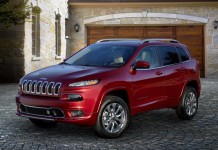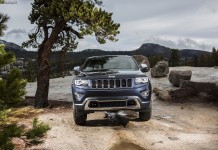Technavio analysts forecast the global four-wheel drive (4WD) vehicle market to post a CAGR of close to 3% by 2019, according to their latest report.
The research study covers the present scenario and growth prospects of the global four-wheel drive vehicle market for 2015-2019. To calculate the market size, the report has considered the unit sales of 4WD light vehicles globally.
Technavio automotive industry analysts highlight the following three factors that are contributing to the growth of the global 4WD vehicle market:
- Rising demand for SUVs
- Safety and comfort
- Improved control on unfavorable terrain
Rising demand for SUVs
According to the report, automobile manufacturers are now shifting their focus toward expanding in emerging countries such as India, China, Mexico, Russia, and Brazil due to the sluggish demand for automobiles in mature markets such as North America and Europe. The demand for SUVs and mini SUVs equipped with MWD systems is steadily increasing. “In the automotive market in China, SUVs are labeled the fastest-growing vehicle segment, owing to the growing demand for these vehicles among the emerging middle class, because of factors such as increasing disposable income,” says Faizan Akhtar a lead automotive manufacturing analyst at Technavio.
In addition, the market for LCVs in countries such as Mexico is expanding because of the growing popularity of SUVs (which are considered LCVs by the consumers), for private use. In developed regions such as North America, owing to the easily available credit (even for people whose credit record suffered by the economic recession of 2008-2009), consumers spending per vehicle has increased, consequently increasing the demand for SUVs.
Safety and comfort
4WD vehicles offer the advantages of both front wheel drive (FWD) and rear wheel drive (RWD). One of the primary benefits offered by 4WD is the better traction performance in both severe weather conditions and on dry road surfaces. As a result, vehicles equipped with 4WD attract both performance-driven consumers as well as those who have specific requirements in unfavorable conditions. 4WD vehicles have excellent balancing, handling, and driving dynamics capabilities.
Modern 4WD have power delivery monitored by electronic traction control systems, along with magnetic clutches. This helps increase the performance of a 4WD vehicle. At lower vehicle speeds, unfavorable vibrations occur in the driveline, which are perceived by the driver as noticeable loss in comfort. To avoid this, vibrations must be prevented from getting into the transmission. This operating condition requires optimum isolation, which is one of the other measures to enhance the comfort experience of consumers in 4WD vehicles.
Improved control on unfavorable terrain
4WDs are available in SUVs, compact automobiles, and crossover SUVs. 4WDs enhance the traction of vehicles as they allow all the wheels to spin, thereby maintaining the balance, if any of the wheels are on slick or slippery surfaces. For instance, 4WD systems, used in pickup trucks and truck-type SUVs, are efficient while driving on snowy, unplowed roads, and muddy and uneven terrain. 4WD drivetrain systems enable the driver to maneuver the vehicle on steep inclines and slog through muddy roads.
“The military relies heavily on 4WDs to ensure the survival, effectiveness, efficiency, and safety of their military convoys in battle zones. The convoys supply food, water, ammunition, and other essential supplies such as first aid kits. As proper roadways between the battle zone and the army base are not common, the convoys need improved mobility in unfavorable terrains, which is enabled through 4WDs,” says Faizan.










[…] a recent report, analysts for Technavio are forecasting an increase in the global demand for Sports Utility […]